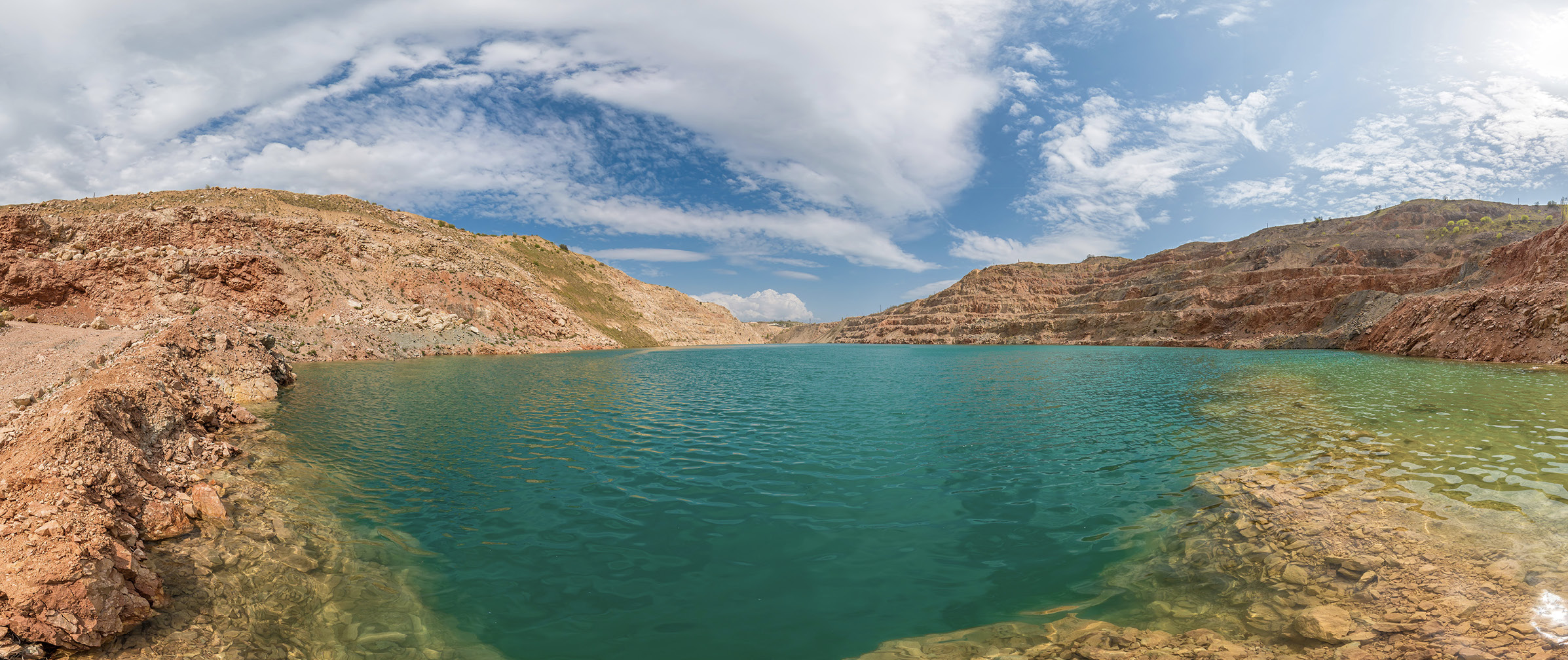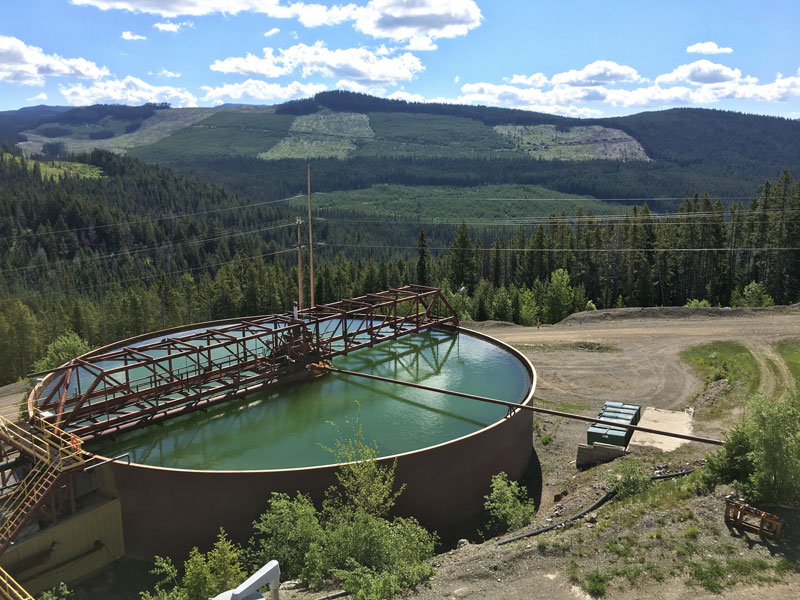North American Mining talks to two experts about the principles, challenges and opportunities of water management in underground mines.
By Jonathan Rowland

Environmental, social and governance (ESG) strategies are now playing a much more significant role in the life of businesses. Traditionally, these have tended to place heavy emphasis on climate change and the need to reduce carbon emissions. While acknowledging the importance of this issue, the focus on carbon “runs the risk that we fail to solve the problem of ensuring access to water and sanitation for all,” noted Will Sarni, founder and CEO of Water Foundry in a 2021 blog for the World Economic Forum.
This is particularly relevant in the mining industry. According to academics, Benjamin Cox and Sally Innis, the actual process of extracting raw materials results in very limited CO2 production. Most carbon emissions attributed to the metals and mining sector comes from the refining and smelting processes, particularly of iron ore and steel (see ‘The mining industry as net beneficiary of a global tax on carbon emissions’ in Communications Earth & Environment, 3, 17 [2022]).
In contrast, water is often the critical sustainability issue in mining regions – and a potential flashpoint for conflict between mining operations and local communities. According to a 2020 survey of mining and metals investors from Fitch Ratings and CRU, water scarcity is the greatest emerging risk to the sector, and could make some projects unviable in coming years, even though demand for metals is expected to increase. This itself could pose a challenge to decarbonization efforts, if it results in a constrained supply of metals critical to green technologies (e.g., batteries, renewable energy).
These macro trends must also be placed alongside a transition taking place within the mining industry itself with deeper and deeper ore bodies being opened up for extraction. With all this in mind, North American Mining talked to Dustin Graves and Hhan Olsen at Stantec about the key issues in underground water management.
Graves is a professional geologist with over 17 years of experience in hydrology, groundwater modeling, aquifer performance analysis and ground water geochemistry. He currently manages the geosciences team in Stantec’s U.S. Mining, Minerals and Metals Group. Olsen is vice president of Mining, Minerals and Metals at Stantec. With over 28 years of experience, he is an industry leader in mine water management for tailings storage facilities, mine dewatering, water resource development, and environmental stewardship.
Key principles of mine water management
“As hydrogeologists and hydrologists, we are generally focused on the regional water balance dynamics that are important for overall mine planning, including how both groundwater and surface water may pose challenges to mining operations, and understanding how these are interrelated,” began Graves. “I’d say a key principle in this endeavor is to think holistically about how water management may affect the mine, but also, importantly, how the mine may affect regional water resources.”
“Best practice is to develop a comprehensive baseline characterization program with site specific information,” said Olsen. “Regional data is critical to evaluate long-term hydrological cycles; however, local data is typically more important when assessing potential impacts and operational water management strategies. A minimum of two years of pre-construction data is useful for engineering and environmental planning purposes.”
This approach is the same whether the mine is at surface or underground, but “from a practical or technical perspective there are some differences,” continued Graves. “For surface mines, the data needed to develop a conceptual site model, at regional scale, is often already available, e.g., geologic maps, stream gauges, and well records for regional water users. For underground mines, however, data on the area beyond the mine property and resource drilling area is often lacking. This information is important for making informed decisions about water management, expectations, and potential impacts to the regional system, so investing in data collection becomes an important aspect of the mine planning process.”
Building on data collection and site modelling work, the development and maintenance of a detailed water budget is “critical in any mine operation,” Olsen continued. “The water budget needs to be developed on a mine-wide basis and for all facilities, from mine dewatering down to water used for dust suppression.” Ways to efficiently re-use water – and so limit fresh water draw – should be considered and implemented, especially in arid environments.
“Well-operated underground mines also must consider the possible impact of mining operations on potable groundwater supplies, and need to determine if they will affect surface water bodies,” added Olsen. This will include “effective and reliable surface water and groundwater monitoring networks to confirm mitigation measures are effective.”
As the depth of mines increases, water management schemes must be “scaled appropriately,” Graves explained. “This may include larger drill rigs and require more CAPEX for data collection at depth to conceptually understand the challenges and install deeper boreholes, deeper wells, larger pumps or more pumps, and intermediate pump stations underground. And of course, the system design needs to be scaled up also, so water conveyance and power requirements must be considered.”
“Hydrothermal waters also present challenges in deeper mines, with variable water chemistry and increased temperature in the mines,” added Olsen. “These changes must be considered in material selection and water management handling.”
“When we’re talking about mineralogical differences in both the target ore and the associated waste rock or tailings, one of the major components of long-term water management planning is the resulting geochemistry of runoff, recharge infiltration, and pit lake formation,” continued Graves. “It is important to include geochemists in the data collection and evaluation phases early in mine planning for these reasons. Here at Stantec, we work in lockstep with our geochemists on these issues, and I think the mining industry in general has made huge strides in the past few decades on this front to understand and take a proactive approach to mitigation strategies for water management and geochemistry.”
The benefits of robust water management
Time spent on developing a robust water management plan at the outset will however reap rewards right through the life of the mine – from permitting, operations, expansions, community relations and, ultimately, mine closure (which can present “unique challenges” for underground mines depending on the groundwater level in the region, said Olsen).
On the flip side, mines that advance with little knowledge of the regional water and hydrogeological dynamics may experience significant operational challenges. “Many underground mines are developed in areas where mine water is hydrothermally-altered as a result of the ore body placement,” explained Olsen. “This water can be highly corrosive to equipment and water management infrastructure. Defining this upfront allows for incorporation of materials that are resistant to corrosion. This may increase CAPEX spending but will reduce long-term OPEX or mining delays from repairs.”
In contrast, underground mines that adopt effective water management will enjoy “dryer and safer working conditions, e.g., by reducing the risk of ground water inrushes along the permeable structures that are often the target of mining operations,” Olsen concluded.
“Each mine site has its own set of challenges,” Graves added. “Additionally, the water management component of mine planning – and, I think, specifically the groundwater management piece – can be overlooked or under-emphasized in early planning. We try to discuss with our clients and colleagues about the importance of water management in the mine planning, permitting, PEA, and PFS stages so we can head-off those challenges.”

Water management and sustainability
So to the question the framed the article at the start: the intersection between sustainability and water management. And when you have cut through the challenges associated with data collection, underground mines may deliver some advantages over surface operations here. “In a very general sense, deeper mines may be further removed from regional and social water dynamics, such as surface water flows and diversions, regional well users, and so forth,” said Graves. “Again, each site is different, and it depends on the geologic setting, so that’s not a ‘catch-all,’ but I think it generally applies.”
“Much of the water management of an underground mine is classified as non-contact water, which is often clean,” added Olsen. “This water could be supplied to regional farming or communities for beneficial uses. For example, at a large mine site in Nevada, we added an additional piping arrangement to the design so that, if required, both the contact and non-contact water pumping systems could be used concurrently, for different uses. For a project in Guatemala, in a highly water-positive underground mine environment, we are evaluating the possibility of using non-contact water generated from dewatering for local agricultural use.”
These final comments underline the potential for mine operators to make a positive impact when it comes to water. But to do so the industry must move beyond seeing water as a purely operational issue. By viewing water holistically along the complete life of the mine, and inclusively with other local water users, the industry has an opportunity to catalyze responsible water management.
Underground mines may present some unique challenges, but they also come with some unique opportunities. The key to unlocking these opportunities, concluded Olsen, is awareness. Mines should be proactive on understanding their water resources. They should “continuously look for improvements to monitoring and managing water resources and water chemistry impacts, while evaluating ways to reduce water usage.”
